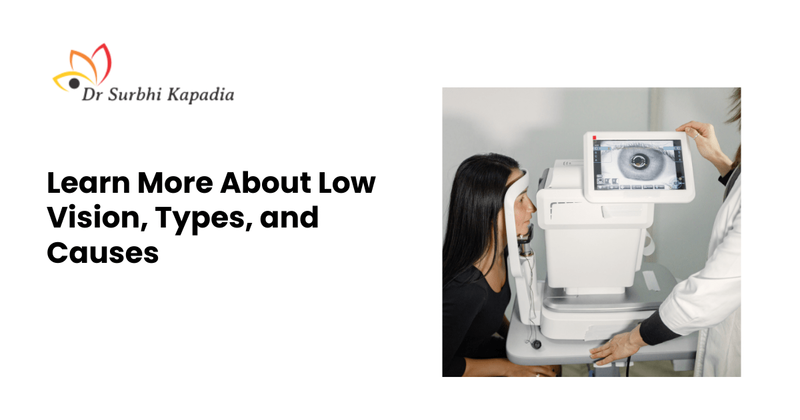|
Getting your Trinity Audio player ready...
|
As we age, our eyes can change, and these changes could be correctable with prescription glasses. However, if prescribed glasses or lenses cannot totally correct your vision, you might be suffering from low vision syndrome. This could happen to people at any age, which makes it critical to understand and help patients with these conditions. In this article, we will provide you with an overview of low vision, including its types and causes.
What is Low Vision?
Low vision is a broad term that includes vision problems that cannot be corrected with medical treatment, surgery, or standard glasses. It can make one’s everyday duties difficult such as driving, reading, identifying faces, differentiating colors and clearly see screen of a television or computer.
Types of Low Vision
There are four most common types of low vision for easy understanding-
- Central Vision Loss
Central vision loss is the most reported form of low vision and is caused when the middle of the retina is damaged. This can cause difficulty reading, recognizing faces, and seeing details from a distance. However, individual’s mobility is generally not affected by this condition because side vision remains unaffected.
- Peripheral Vision Loss
A person with peripheral vision loss will struggle to recognize objects on either side, above or below eye level. They will have experience similar to that of viewing through a tunnel – hence also described as ‘tunnel vision’. However, their central vision is unaffected. This can cause problem when judging distances. Furthermore, activities that require both eyes to perform together, such as reading or driving will be compromised. Advanced glaucoma patients can have this kind of vision pattern.
- Night Blindness
Night blindness is a kind of low vision that impairs one’s ability to see in the dark, both outside in the light of stars or moonlight and within dimly illuminated locations such as movie theatres or restaurants. It can be caused by a variety of eye conditions, including retinitis pigmentosa and cataracts.
- Blurry or Hazy Vision
Another type of poor vision is blurry vision, which makes it difficult to see details clearly. Even with the best corrective glasses, both close and far objects may look out of focus.
What Causes Low vision?
Several conditions, such as cataracts, age-related macular degeneration, retinitis pigmentosa, glaucoma, diabetic retinopathy, and optic neuritis, can cause low vision. Some neurological conditions can result in various vision loss patterns. Some disorders that come with getting older are more likely to affect people who are older. However, natural ageing doesn’t always cause people to lose their sight completely.
Treatments for Low Vision
Unfortunately, low vision is not usually treatable with routine prescription glasses, medication, or surgery. But some measures could be taken to enhance eyesight that can help in everyday living and improve the quality of life. Any kind of vision problems does warrant a complete eye examination and needed investigations by your ophthalmologist. Low vision aids have played a remarkable role in helping patients who do not benefit by surgery.
Conclusion
Many people are affected by low vision, so it is essential to consult an ophthalmologist if you notice any changes in your vision. Early detection and timely treatment can help reduce the symptoms of low vision. We hope that this blog has provided you with information on low vision so that you can get a better understanding of your own or a loved one’s situation. For any kind of queries you may contact Dr Surbhi Kapadia at Aadicura superspeciality hospital. For booking your appointment – 8980500015.
Follow our YouTube Channel
![]()








